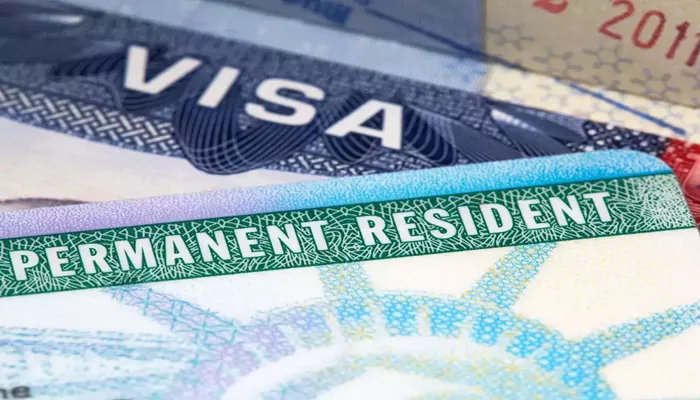Securing a U.S. visa involves several steps, one of which is paying the visa application fee. This guide will help you understand where and how to pay the fee for various U.S. visas, ensuring a smooth process for your application.
Understanding U.S. Visa Fees
The U.S. visa application fee, often called the MRV (Machine Readable Visa) fee, varies depending on the type of visa you are applying for. This fee is typically non-refundable and is required to process your application.
Types of U.S. Visas and Their Fees
Nonimmigrant Visas: These are for temporary stays in the U.S. Common types include tourist visas (B-2), business visas (B-1), and student visas (F-1). The fee for most nonimmigrant visas is $185.
Immigrant Visas: These are for those wishing to move permanently to the U.S. Fees can vary depending on the type of immigrant visa. For example, the fee for an immediate relative or family preference visa is $325.
K Visas: These are for fiancés or spouses of U.S. citizens. The K-1 visa fee is $265, while the K-3 visa fee is $265 as well.
Other Visas: Some visas, like those for religious workers or certain exchange visitors, have specific fees.
Payment Methods
Online Payment
Pay.gov: Most applicants are required to pay their visa fee online through Pay.gov. This website is the primary platform for U.S. visa fee payments. Here’s how you can do it:
Create an Account: Visit govand create an account if you don’t have one.
Select the Form: Choose the form corresponding to the visa type you are applying for. For example, select “DS-160” for nonimmigrant visas or “DS-260” for immigrant visas.
Enter Your Information: Fill in the required information, including your visa type and personal details.
Make the Payment: Pay using a credit card or debit card. Ensure that your payment is processed successfully and you receive a confirmation receipt.
CEAC (Consular Electronic Application Center): After completing the DS-160 form, you may need to pay the fee through CEAC if instructed by the U.S. Embassy or Consulate handling your case.
Bank Payments
Authorized Banks: Some U.S. embassies and consulates allow you to pay the visa fee at authorized banks. This method is common in countries where online payments are not feasible.
Check with the Embassy: Verify the list of authorized banks on the U.S. embassy or consulate’s website in your country.
Visit the Bank: Go to the designated bank with your visa application details. You will be provided with a payment slip.
Complete the Payment: Pay the visa fee and obtain a receipt. You may need to present this receipt at your visa interview.
Visa Application Centers (VACs): In some locations, Visa Application Centers handle visa fee payments. These centers often work in collaboration with the U.S. embassy.
Locate the VAC: Find the nearest VAC through the U.S. embassy or consulate’s website.
Submit Payment: Pay the visa fee at the VAC and obtain a receipt. This receipt is usually required for your visa interview.
Payment Through Local U.S. Embassies or Consulates
In certain circumstances, you may be instructed to pay the fee directly to the U.S. embassy or consulate. This is less common but can occur in specific cases.
Contact the Embassy: Reach out to the U.S. embassy or consulate where you will attend your visa interview.
Follow Instructions: They will provide you with the details on how to pay the fee, including acceptable payment methods and the location for payment.
Important Considerations
Confirmation of Payment
Always keep the receipt or proof of payment, whether you pay online, through a bank, or at a VAC. This confirmation is essential for tracking your payment and for your visa interview.
Fee Validity
Visa application fees are generally valid for a specific period. If your visa application is not processed within this period, you may need to pay the fee again. Check with the U.S. embassy or consulate for the validity period.
Refund Policy
Visa application fees are typically non-refundable. Even if your visa application is denied, you generally will not receive a refund. Make sure to review the fee and refund policies before making a payment.
Expedited Processing Fees
In some cases, you might want to expedite the processing of your visa. This may involve additional fees. Check with the U.S. embassy or consulate to understand the expedited service options and associated costs.
see also: How to Get a Green Card in the USA for Students?
Common Issues and Solutions
Payment Errors
If you encounter issues while paying online or through a bank, ensure that you:
Double-Check Information: Make sure all information entered is correct.
Contact Support: Reach out to Pay.gov support or the bank for assistance if needed.
Retry Payment: If the payment fails, try again or use a different payment method.
Incorrect Fee Amount
If you accidentally pay the wrong fee amount:
Contact the U.S. Embassy: Inform them of the mistake and follow their instructions to correct it.
Provide Proof: Keep all documents and receipts related to the incorrect payment for reference.
Missing Receipts
If you do not receive a receipt after payment:
Check Spam/Junk Mail: Sometimes, email receipts may end up in your spam folder.
Contact the Payment Platform: Reach out to Pay.gov or the bank to obtain a duplicate receipt.
Conclusion
Paying the U.S. visa application fee is a crucial step in the visa application process. By understanding the different payment methods available and following the instructions carefully, you can ensure a smooth and efficient application process. Always keep records of your payment and be aware of any specific instructions or requirements from the U.S. embassy or consulate in your area.
For further assistance, consult the official U.S. embassy or consulate website, or seek help from a qualified immigration lawyer.


